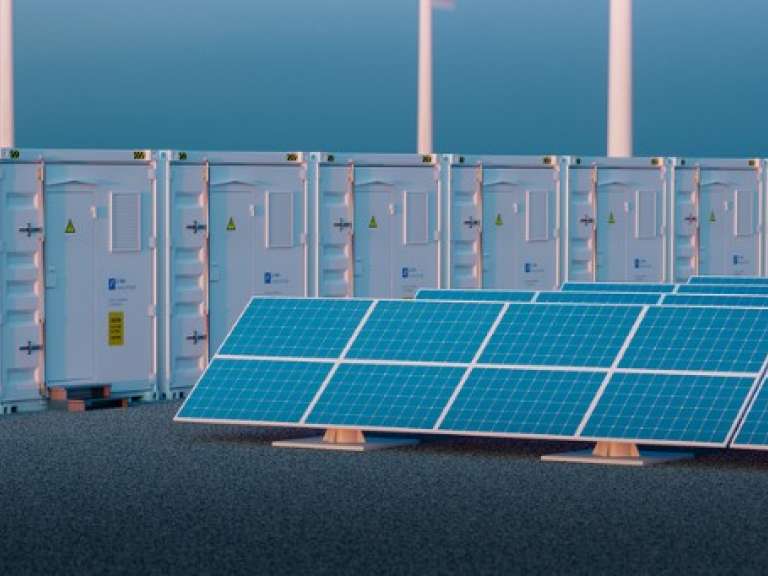Project announcements for a new generation resource are emerging rapidly in the global power market. Tandem solar-plus-storage projects are creating new synergies, improving overall renewable fleet economics, and firming up the intermittent solar resource—without the aid of fossil-fired generation.
Solar and storage resources can be paired in different combinations to create a variety of value propositions, from increasing the output of solar farms to delivering the lowest-cost power in the market, enabling virtual power plants, and offering more resilient grid solutions. All of these use cases suggest that conventional generators will be increasingly challenged by solar-plus-storage resources in electricity markets globally.
When One Plus One Equals More Than Two
Something unprecedented is occurring rapidly in the global power market: The marriage of solar resources with energy storage is creating a low-cost and more dispatchable resource, the economics of which are continuously improving. Data points from the first months of 2018 suggest that this trend will quickly pick up speed, as the economics will only get better over time.
Exhibit A: Florida
A project announced by Florida Power & Light (FPL) demonstrates a novel outcome: that solar-plus-storage projects not only offer a way to store energy from solar arrays to release when needed, but can also potentially increase the overall output of the facility.
FPL's solar facility is combined with a 4-MW, 16-MWh storage system outfitted with DC-coupled batteries, which can capture energy when the sun's output is strongest. Typically, inverters have to clip energy during these times. However, the new system harvests more than 500 MWh annually that would otherwise be lost.
Exhibit B: Arizona
Arizona Public Service (APS) and First Solar unveiled a 15-year power purchase agreement that involves a 65-MW solar array conjoined with a 50-MW, 135-MWh storage system. Pairing the two resources allows the facility to store energy when the sun is at its zenith and deliver it to the grid between 3:00 p.m. and 8:00 p.m.—when energy demand peaks.
Exhibit C: Colorado
Xcel Energy's solicitation for renewable energy bids yielded jaw-dropping results, with median prices for solar and storage at $36/MWh. The previous record from 2017 was $45/MWh. The project demonstrates the superior economics of these systems—a major factor in their increasing adoption globally.
Exhibit D: Australia
A project announced in Far North Queensland, providing power to 3,000 customers, includes a 10.8-MW solar array paired with a 1.4-MW, 5.3-MWh lithium-ion storage system. Similar to the First Solar/APS endeavor, this project is designed to deliver electricity to the grid when it's needed, rather than only when the sun is shining. The project can also island, or separate, from the main grid and continue delivering electrons if the main grid is down. As power systems globally push for increased resilience to natural disasters, islanding resources like these could prove critical.
Additionally, the South Australia government has trumpeted an initiative to create a centrally controlled 250-MW, 650-MWh virtual power plant by combining 5-kW solar arrays with 13.5-kW Tesla PowerWall storage devices on 50,000 homes. The project is expected to cost $800 million AUD—the government is still looking for program investors—and it will be the world's largest virtual power plant. It will commence with 1,100 homes and then increase to 24,000 sites. 1,000 installations have already taken place. As with the other projects, the virtual power plant will exploit the solar-plus-storage synergies, balancing the solar output with storage capabilities and the needs of the surrounding power grid.
The Future Is Bright for Solar and Storage, But Perhaps Dim for Traditional Generation
James Robo, CEO of NextEra—the largest developer of renewable projects in the US—asserted that he expects further declines in the cost of solar modules; combined with increasing efficiencies, this will position solar without incentives as a "3.0–4.0 cent per kilowatt hour product, below the variable cost required to operate an existing coal or nuclear generating facility of 3.5–5.0 cents per kilowatt hour."
At the same time, Bloomberg reports that battery costs have fallen by 24 percent in 2017 alone and 80 percent since 2010. The average prices are set to decline as much as an additional 50 percent by 2025, largely driven by electric-vehicle markets and accompanying economies of scale. Bloomberg estimates that storage developers may pay a premium over auto companies (as high as 51 percent) as a result of lower order volumes, but the overall trend in declining costs is clear.
The combination of lower solar costs and the plummeting price of energy storage creates a challenging long-term environment for conventional generation. Indeed, there is a great likelihood that many more of these solar-plus-storage projects will crop up at very low costs, demonstrating various advantages to customers and the grid. Should that occur, conventional-generation plants risk being increasingly shouldered aside by these new resources. Add to that a growing movement by governments and regulatory agencies to further decarbonize the power fleet, and it's clear that the generation mix will increasingly shift toward renewables and storage.
Only the most efficient and well-run generators are likely to survive in this rapidly emerging new world. This dynamic will probably intensify as new solar-plus-storage projects kick off with low price tags, new use cases, and varied value propositions in markets worldwide.
